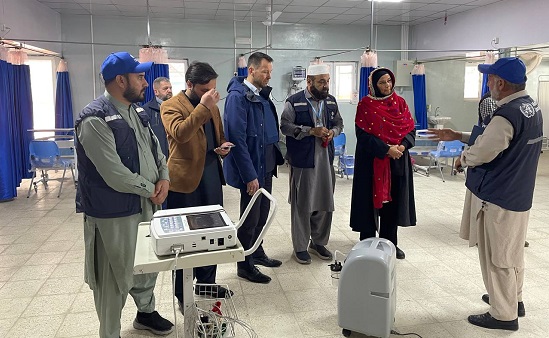
6 March 2023, Kabul – The World Health Organization (WHO), through generous support from the European Civil Protection and Humanitarian Aid Operations (ECHO), launched a new emergency medical department in Mirwais Regional Hospital in Kandahar, Afghanistan.
The European Union delegation to Afghanistan visited Mirwais Regional Hospital's new Emergency Unit. WHO has been supporting the hospital through sustainable funding from ECHO.
The visit of EU Chargée d'Affaires a.i. and Deputy Head of Delegation to Afghanistan Ms Raffaella Iodice, and EU Special Representative for Afghanistan Mr Thomas Nicholson provided an opportunity to enhance collaboration and highlight the EU's and WHO's contribution to the hospital.
"WHO's partnership with ECHO enables us to reach as many people as possible, especially women and girls, with life-saving health services," says Dr Luo Dapeng, WHO Representative in Afghanistan. "Our joint work in supporting the Mirwais Regional Hospital Emergency Unit will better serve the people of Kandahar region and I thank ECHO for their generous support."
Mirwais Regional Hospital in Kandahar City is a 600-bed facility serving nearly 2 million people in the Region. Despite this, 357 000 people in the region, which has been extensively affected by conflict, live in an underserved area with little access to health care services, especially outside of the city. The new Emergency Unit aims to serve better the people of Kandahar and the neighbouring Helmand, Zabul and Oruzgan. Mirwais Regional Hospital is also the teaching hospital for Kandahar University's Faculty of Medicine.
To date, the emergency room has a 15-bed capacity, in which WHO has supplied the required medical equipment, including patient beds, patient monitors, suction machines beside cupboards, 2 ventilators, patient mattresses and linen. WHO is also providing medical kits and supplies.








